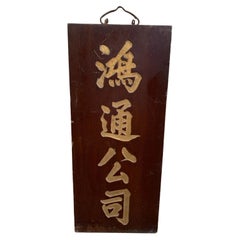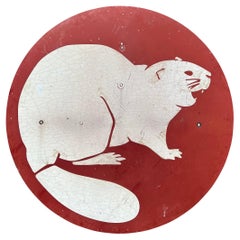Chinoiserie Signs
Emerging in the 17th century, chinoiserie appropriated the aesthetics and imagery of popular East Asian design for European-made versions. Reflecting the exoticization of China, Japan and other countries in this era, the word directly translates from French to “Chinese-esque,” which reveals its shortcomings as a style of furniture and decor that often stereotypically and reductively mimics Asian culture rather than showcasing and paying tribute to its artistic traditions.
The enthusiastically decorative chinoiserie style was propelled by influential tastemakers including French King Louis XIV, whose Trianon de Porcelaine in 1670 was inspired by Chinese architecture. Expanded trade between the East and West led to a demand for porcelain, lacquer objects, silk and other goods, which further informed the fanciful furniture being crafted in Europe.
Artisans working in the chinoiserie style used materials and elements like pagoda shapes, bamboo, lacquer surfaces, bird and flower motifs and other interpretations of Asian design on pieces that were frequently set against vibrant wallcoverings. This whimsical approach yielded chinoiserie furniture that boasted dramatic flourishes drawing on the natural world and reflected the dominance of Rococo during the 18th century.
As chinoiserie was shaped by approximations of Asian design by European creators, it had regional variations, such as Chinese Chippendale in England where cabinets, chairs and tea tables had wooden fretwork designs and “japanned” surfaces intended to resemble lacquer work that was created in East Asia. In North America, furniture makers in Boston and New York integrated chinoiserie-painted scenes into Queen Anne furniture.
Antique chinoiserie furniture has continued to be fashionable, from its popularity with decorators of the Hollywood Regency era — James Mont, Tommi Parzinger, William Haines and Samuel Marx favored the style — to contemporary interior designers, although it brings with it a complex history.
Find a collection of chinoiserie bedroom furniture, cabinets, decorative objects and more on 1stDibs.
Early 20th Century Chinese Chinoiserie Signs
Wood, Paint
Mid-20th Century Chinese Chinoiserie Signs
Wood, Paint
Early 20th Century Chinese Chinoiserie Signs
Wood, Paint
1930s American Vintage Chinoiserie Signs
Wood
Mid-20th Century American Chinoiserie Signs
Steel
1880s American Antique Chinoiserie Signs
Silk
Early 20th Century American Chinoiserie Signs
Wood
20th Century American Chinoiserie Signs
Wood
19th Century Chinese Antique Chinoiserie Signs
Wood
Early 20th Century French Chinoiserie Signs
Metal
1930s American Vintage Chinoiserie Signs
Metal
Early 20th Century American Chinoiserie Signs
Brass
1950s Austrian Vintage Chinoiserie Signs
Wrought Iron, Bronze
1950s American Vintage Chinoiserie Signs
Porcelain
19th Century Antique Chinoiserie Signs
Wood




